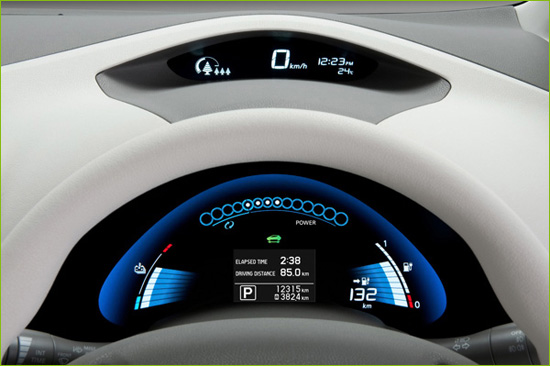Variations in mileage and range
The State of charge is the percentage of battery capacity which is currently available for driving. It should be at 100 % after a normal overnight charge. If it is not at maximum it means that somebody used the car before you or it has not been properly charged overnight. Following a quick charge (see section 0) the state of charge is normally limited to 80 %.
The state of charge does not guarantee a certain range. It the journey is to cover highway driving the range will be somewhat shorter than if the journey only covers city or suburban driving.

If the EV is equipped with a range estimator stating the available range in km or miles this is based purely on historical data. The car has no way of knowing which way you intend to drive today. That is, unless you tell it.
That is why you should always use the in-car satnav system if available. The satnav will have a much better chance a estimating your range because it knows where you are actually going.
Another big consumer of energy in an EV is the cabin heating and air conditioning system.
Depending on the driving conditions heating and air conditioning can use up to 25 % of the energy available for travel, thus shortening your range by 25 %.
For the past century cars have been built under the assumptions that waste heat from the engine was abundant. Therefore cars are not built like houses with double glazing and thick insulated walls. They are built from thin steel sheet which is one of the most heat conducting materials there is.
In an EV there is practically no waste heat, so all the heating has to come from the battery. Heating an EV cabin requires up to 4.000 W which would seriously drain the battery if used for prolonged periods of time. This is why preheating is essential.
